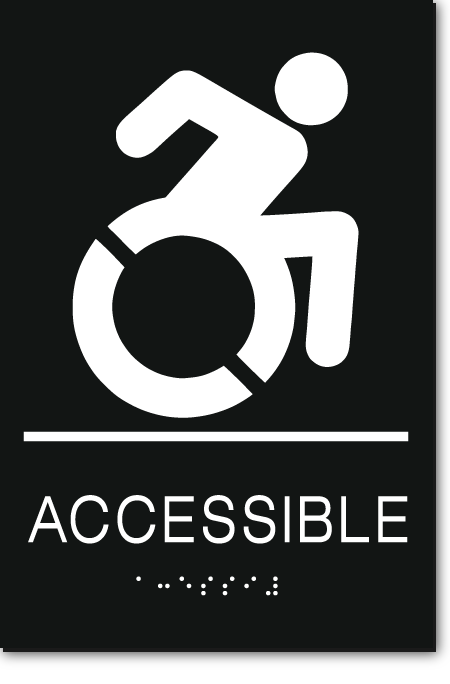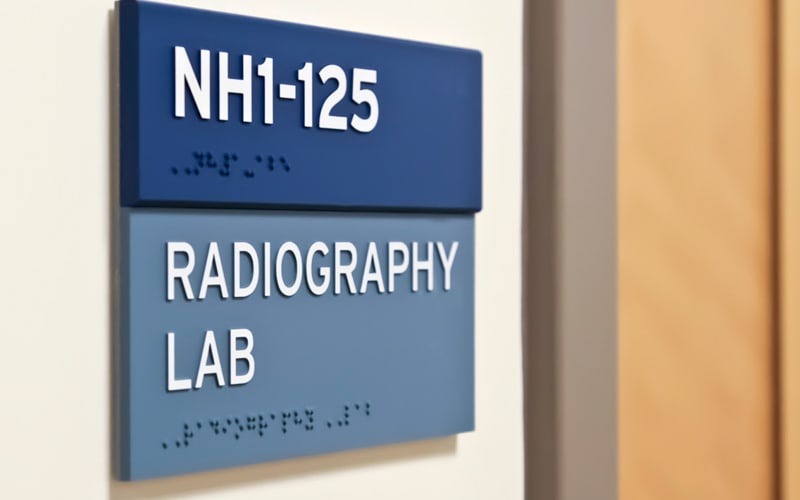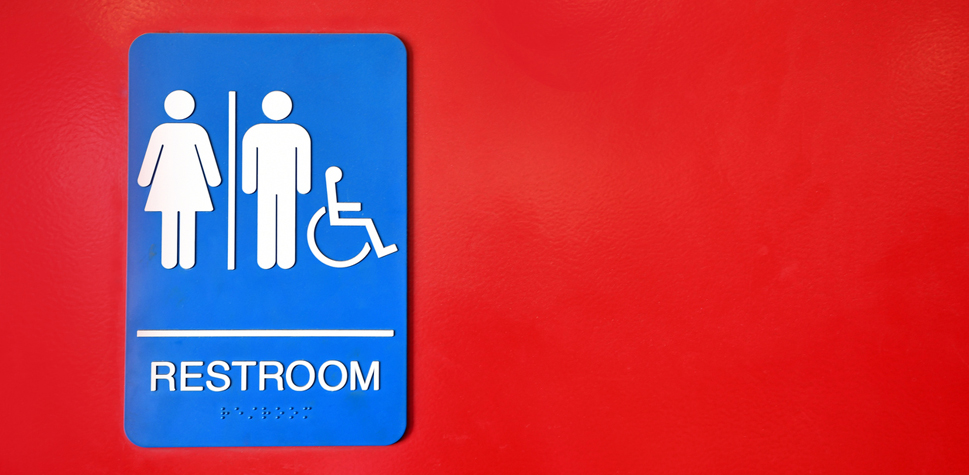Personalizing ADA Signs to Meet Your Specific Needs
Personalizing ADA Signs to Meet Your Specific Needs
Blog Article
Discovering the Key Functions of ADA Signs for Enhanced Access
In the world of access, ADA indicators work as quiet yet powerful allies, making certain that areas are navigable and inclusive for people with specials needs. By incorporating Braille and tactile elements, these indicators break obstacles for the visually impaired, while high-contrast color design and readable typefaces deal with varied visual requirements. Moreover, their tactical placement is not arbitrary but rather a calculated initiative to promote seamless navigating. Yet, past these features lies a much deeper narrative about the advancement of inclusivity and the recurring commitment to creating fair areas. What more could these indicators indicate in our quest of global ease of access?
Importance of ADA Conformity
Guaranteeing conformity with the Americans with Disabilities Act (ADA) is vital for fostering inclusivity and equal gain access to in public rooms and offices. The ADA, enacted in 1990, mandates that all public centers, employers, and transportation solutions suit people with specials needs, guaranteeing they appreciate the very same legal rights and opportunities as others. Compliance with ADA criteria not just meets lawful commitments yet additionally improves a company's online reputation by showing its dedication to diversity and inclusivity.
One of the crucial elements of ADA compliance is the execution of easily accessible signage. ADA indicators are made to make sure that people with specials needs can quickly navigate through buildings and areas. These indications must comply with particular guidelines concerning size, font style, color comparison, and positioning to ensure exposure and readability for all. Effectively executed ADA signs helps remove obstacles that individuals with impairments commonly encounter, thereby advertising their self-reliance and confidence (ADA Signs).
Additionally, sticking to ADA regulations can mitigate the danger of prospective fines and lawful consequences. Organizations that stop working to follow ADA guidelines might face penalties or claims, which can be both economically challenging and harmful to their public picture. Hence, ADA conformity is integral to promoting an equitable atmosphere for every person.
Braille and Tactile Components
The consolidation of Braille and tactile elements into ADA signs embodies the concepts of ease of access and inclusivity. It is commonly positioned underneath the matching message on signage to ensure that individuals can access the details without visual assistance.
Responsive aspects expand past Braille and include raised signs and characters. These parts are created to be discernible by touch, enabling individuals to determine space numbers, toilets, exits, and various other crucial areas. The ADA establishes particular guidelines concerning the size, spacing, and placement of these tactile aspects to enhance readability and make sure uniformity across different atmospheres.

High-Contrast Color Schemes
High-contrast color pattern play a crucial function in boosting the visibility and readability of ADA signs for people with visual disabilities. These schemes are crucial as they maximize the difference in light reflectance between text and history, ensuring that indications are conveniently discernible, even from a distance. The Americans with Disabilities Act (ADA) mandates her latest blog the usage of certain shade contrasts to accommodate those with restricted vision, making it a crucial facet of conformity.
The efficacy of high-contrast colors depends on their capability to attract attention in different illumination problems, including dimly lit settings and areas with glow. Commonly, dark message on a light history or light text on a dark history is employed to accomplish optimal comparison. Black message on a white or yellow history provides a stark aesthetic distinction that aids in quick recognition and understanding.

Legible Fonts and Text Size
When thinking about the design of ADA signage, the selection of clear typefaces and ideal text dimension can not be overstated. The Americans with Disabilities Act (ADA) mandates that typefaces have to be not italic and sans-serif, oblique, manuscript, highly ornamental, or of uncommon form.
According to ADA standards, the minimal message height must be 5/8 inch, and it needs to increase proportionally with watching distance. Consistency in text size adds to a natural aesthetic experience, assisting people in navigating settings successfully.
Moreover, spacing in between letters and lines is integral to clarity. Sufficient spacing protects against characters from appearing crowded, improving readability. By sticking to these requirements, designers can substantially boost availability, guaranteeing that signage serves its intended function for all people, no matter their visual capacities.
Efficient Placement Techniques
Strategic positioning of ADA signage is crucial for making best use of access and making sure compliance with legal requirements. ADA standards stipulate that signs must be mounted at a height in between 48 to 60 inches from the ground to guarantee they are within the line of view for both standing and seated people.
Additionally, signs have to be put beside the latch side of doors to permit simple recognition prior to entrance. This positioning assists individuals find spaces and areas without obstruction. In situations where there is no door, indicators should be situated on the closest adjacent wall. Uniformity in sign placement throughout a center enhances predictability, minimizing complication and boosting general individual experience.

Final Thought
ADA signs play a vital duty in advertising ease of access by incorporating features that resolve the requirements of people with handicaps. These aspects collectively cultivate a comprehensive atmosphere, highlighting the significance of ADA conformity in find out here now ensuring equivalent access for all.
In the realm of availability, ADA signs serve as quiet yet powerful allies, ensuring that areas are accessible and comprehensive for people with impairments. The ADA, passed in 1990, mandates that all public centers, companies, and transportation solutions fit individuals with handicaps, ensuring they appreciate the very same civil liberties and opportunities as others. ADA Signs. ADA indicators are developed to make certain that individuals with disabilities can easily navigate through buildings and areas. ADA standards state that indicators must be placed at a height in between 48 to 60 inches from the ground to guarantee they are within the line of view for both standing and seated people.ADA signs play an essential function in advertising ease of access by integrating functions that address the needs of people with specials needs
Report this page